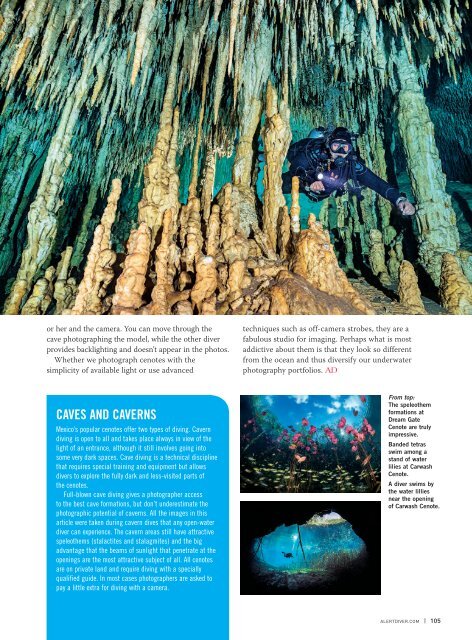AD 2017 Q4
Alert Diver is the dive industry’s leading publication. Featuring DAN’s core content of dive safety, research, education and medical information, each issue is a must-read reference, archived and shared by passionate scuba enthusiasts. In addition, Alert Diver showcases fascinating dive destinations and marine environmental topics through images from the world’s greatest underwater photographers and stories from the most experienced and eloquent dive journalists in the business.
Alert Diver is the dive industry’s leading publication. Featuring DAN’s core content of dive safety, research, education and medical information, each issue is a must-read reference, archived and shared by passionate scuba enthusiasts. In addition, Alert Diver showcases fascinating dive destinations and marine environmental topics through images from the world’s greatest underwater photographers and stories from the most experienced and eloquent dive journalists in the business.
You also want an ePaper? Increase the reach of your titles
YUMPU automatically turns print PDFs into web optimized ePapers that Google loves.
or her and the camera. You can move through the<br />
cave photographing the model, while the other diver<br />
provides backlighting and doesn’t appear in the photos.<br />
Whether we photograph cenotes with the<br />
simplicity of available light or use advanced<br />
techniques such as off-camera strobes, they are a<br />
fabulous studio for imaging. Perhaps what is most<br />
addictive about them is that they look so different<br />
from the ocean and thus diversify our underwater<br />
photography portfolios. <strong>AD</strong><br />
CAVES AND CAVERNS<br />
Mexico’s popular cenotes offer two types of diving. Cavern<br />
diving is open to all and takes place always in view of the<br />
light of an entrance, although it still involves going into<br />
some very dark spaces. Cave diving is a technical discipline<br />
that requires special training and equipment but allows<br />
divers to explore the fully dark and less-visited parts of<br />
the cenotes.<br />
Full-blown cave diving gives a photographer access<br />
to the best cave formations, but don’t underestimate the<br />
photographic potential of caverns. All the images in this<br />
article were taken during cavern dives that any open-water<br />
diver can experience. The cavern areas still have attractive<br />
speleothems (stalactites and stalagmites) and the big<br />
advantage that the beams of sunlight that penetrate at the<br />
openings are the most attractive subject of all. All cenotes<br />
are on private land and require diving with a specially<br />
qualified guide. In most cases photographers are asked to<br />
pay a little extra for diving with a camera.<br />
From top:<br />
The speleothem<br />
formations at<br />
Dream Gate<br />
Cenote are truly<br />
impressive.<br />
Banded tetras<br />
swim among a<br />
stand of water<br />
lilies at Carwash<br />
Cenote.<br />
A diver swims by<br />
the water lillies<br />
near the opening<br />
of Carwash Cenote.<br />
ALERTDIVER.COM | 105









